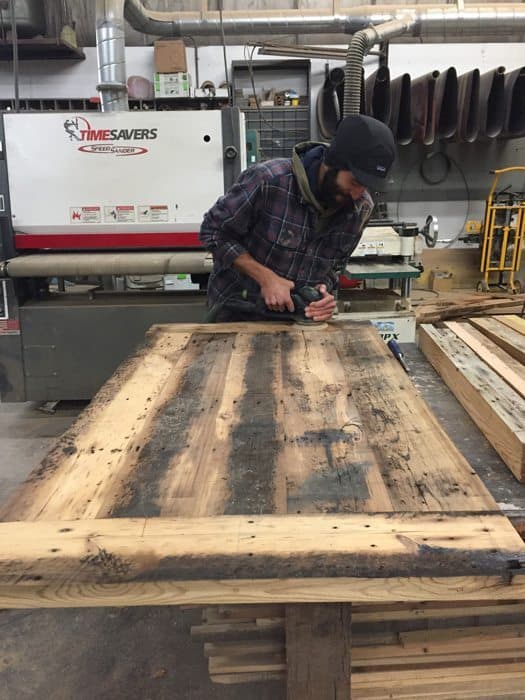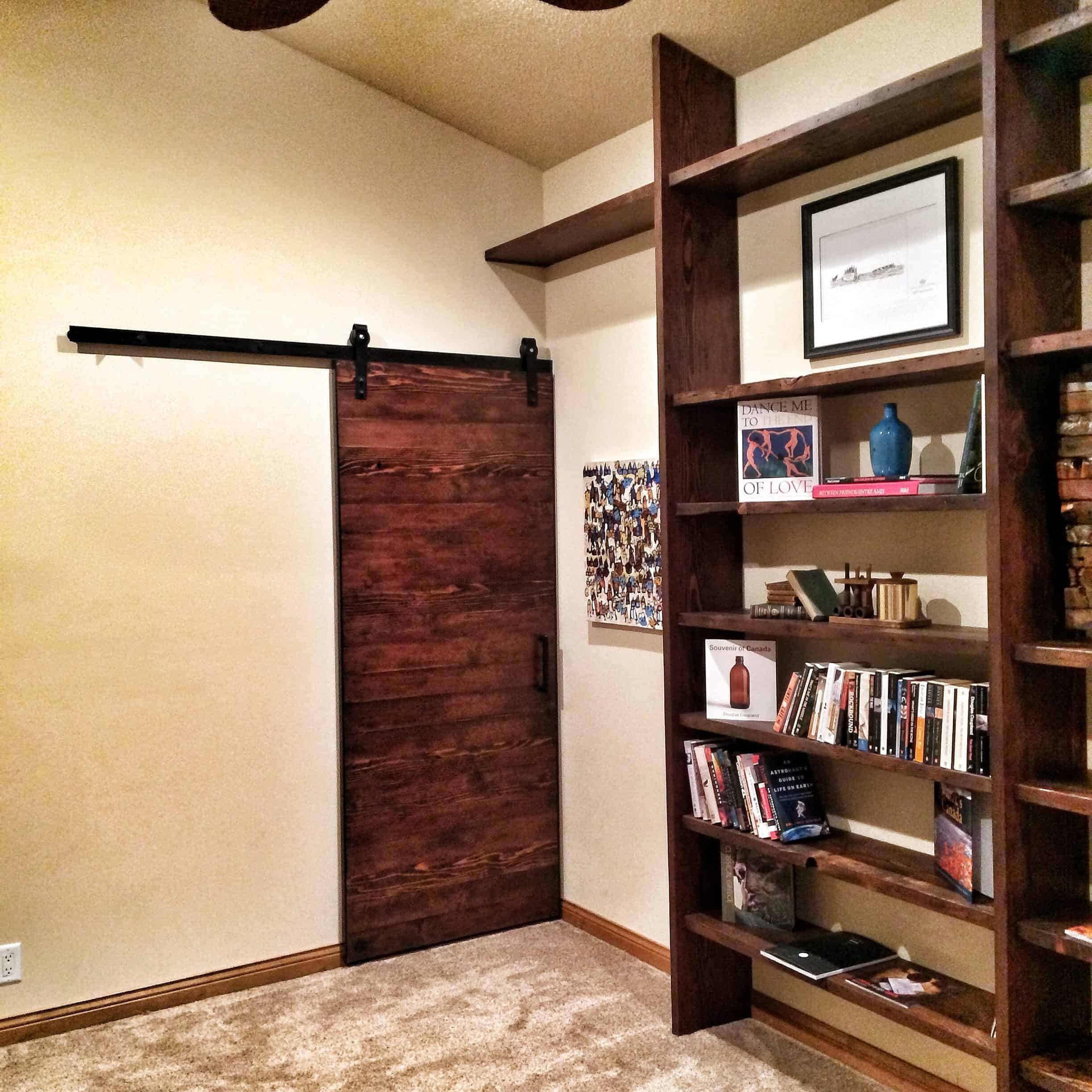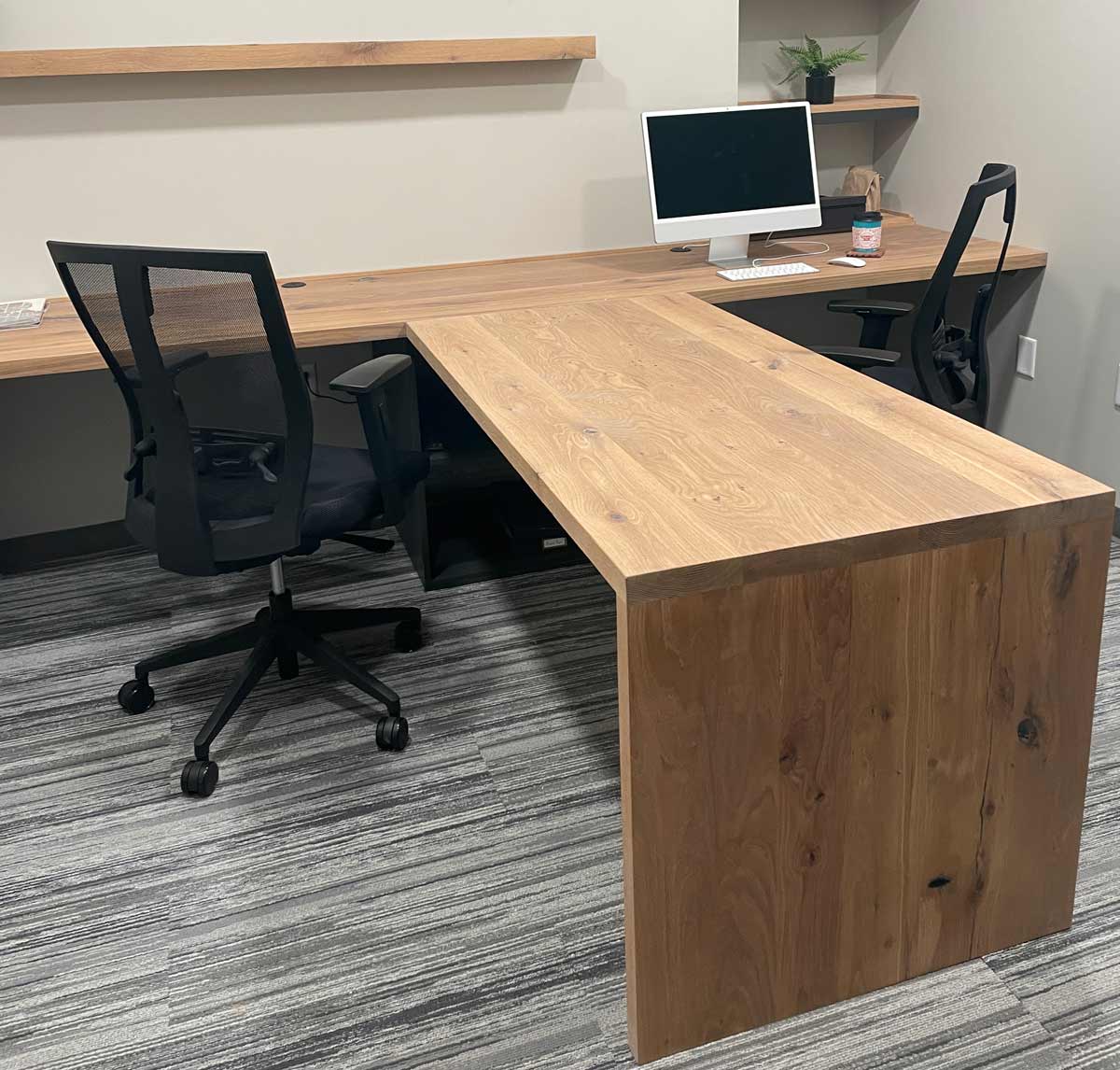
Podcast & Media Desks
It goes without saying that every podcast is different and therefore every podcast desk has different advantages and disadvantages for every situation. Depending on the
If you’ve been wanting to add to your bank of knowledge or sound like a pro at identifying some of the most common species of wood, then read this guide.
Here at Grain Designs, we love natural materials—and wood is no exception. It’s versatile and expressive and can be used for everything from structural supports and floor coverings to dining room tables and sliding barn doors. It can be sourced from sustainable forests or reclaimed from existing buildings or items and can be painted, stained, or left all natural. Because of these various treatment options, it can be particularly difficult, if not nearly impossible, to identify certain types or species of wood.
One of our favorite aspects of wood is that no two pieces are exactly alike. However, this can often mean that it can be challenging to identify a piece of wood by its species if you don’t know what to look for. Read on as we tackle a few ways to recognize some of the most common species of wood by sight.
First of all, make sure that you’re looking at a solid piece of wood. You can do this by looking at the edges of a piece and seeing if the end grain matches up with the direction of the grain along the face of the wood. If it looks like the same pattern repeats itself on all sides of the board, then you’re probably not looking at solid wood.
Secondly, try and make certain that you’re looking at a piece of wood that hasn’t been stained or weathered since these processes alter the visual appearance of the wood and can make it tricky to see its true colors, grain direction, and composition.
Now, you should be ready to look for a few key characteristics of wood: its color, type of grain (either straight, knotty, or interlocking), and whether it’s ring-porous. Here’s what to look for when identifying pine, oak, maple, and walnut.
Pine is the most common and abundant type of wood in North America, and there are dozens of different species of pine. It’s relatively easy to spot because of its frequent presence of dark knots and its distinct yellow color. It also has a straight grain and is ring-porous, so the growth rings in the grain appear as darker brown lines throughout. Because of these variations in the grain, it lends itself to a more rustic, casual look. Pine is very easy to work with and is relatively soft. At Grain Designs, we typically use white pine for our table tops.
 Oak
OakAnother common type of wood is oak. There are two types of oak: red oak and white oak. Both species are light brown in color, although red oak usually has hints of red, and both have visible growth rings and straight grains. There are few knots in red and white oak, but a distinctive feature is visible in a certain cut of the wood, called quartersawn, where it displays strong flecks of rays. These flecks can create beautiful, unusual patterns that have a reflective quality and give a lot of character to a piece or space. White oak is preferred for furniture-making because it has a more attractive figure than red oak. White oak is also resistant to moisture and can be used on outdoor furniture.
 Maple
Maple When you hear maple, you might be thinking of the distinctive maple tree or even maple syrup, but the wood species of maple is actually sold under two distinct types: soft maple and hard maple.
When it’s freshly cut, maple has light, creamy color. Sometimes a light reddish-brown if it’s exposed to direct sunlight. So, it’s not always an appropriate selection for all spaces or items. Maple is also known for having unusual and varied grain patterns, as opposed to straight grains. The resulting unique patterns and colors are sought-after by woodworkers and even used to construct instruments.
Black walnut is very common, but because it doesn’t yield as much wood as larger species, it tends to be more expensive. Black walnut is known for its rich, dark color and straight grain, and it ranges in color from a dark tan to a deep chocolate brown. Its sapwood can be a pale yellow, making a stark contrast between the lighter outer rings and the darker inner rings. Unfortunately, walnut is somewhat expensive, and finding large boards for big projects is getting difficult. In spite of this, walnut is still a great wood to work with and lends itself nicely for use as accents and inlays to dress up a project.
 Cherry
Cherry Finally, we’ll look at some of the key characteristics of cherry, or Black Cherry. Cherry can often be identified because of its reddish tone, which starts out as a lighter, pinkish-yellow hue that darkens to a reddish brown after being exposed to sunlight. Cherry truly ages beautifully. It has a straight grain with some distinction between growth rings and the rest of the wood and is often used for cabinetry since it’s not strongly affected by changes in humidity.
Hopefully, this blog expanded your knowledge about different species of woods common around this area of the country. If you have any questions about the wood we use at Grain, feel free to reach out!
If you would like to view our reclaimed products, click here.
Watch our blog for more informative pieces! You can view table styles in our “build” section at our furniture and mercantile store to touch and feel various samples, styles, and offerings for tables and more.

Located at 3265 45th St S. Fargo, ND.

It goes without saying that every podcast is different and therefore every podcast desk has different advantages and disadvantages for every situation. Depending on the

GET FURNITURE QUOTE SCHEDULE A CONSULT Every business small or large has one thing in common and that is the need to be on the

GET FURNITURE QUOTE SCHEDULE A CONSULT The modern workplace is ever evolving and part of that evolution is the need for a healthier lifestyle in

GET FURNITURE QUOTE SCHEDULE A CONSULT The modern workplace has undergone a massive change over the last several years. With work from home becoming increasingly
